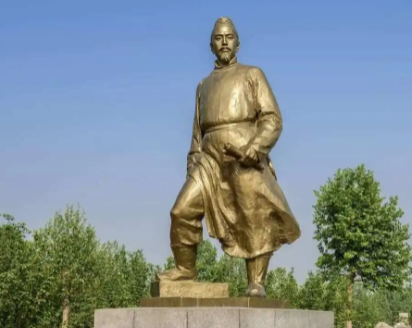A Brief Report on the Investigation of the Warring States Period Handicraft Workshop Site in Xinzhuang behind the Temple of Yuwang City in Xia County - Revealing the Secrets of the Handicraft Workshop in the Warring States Period. In the long history of human society, every step of progress is inseparable from the advancement and development of technology. As an important field of ancient social and economic development, handicrafts have had a profound impact on social life, culture, and military affairs of that time. To better understand the situation of handicraft workshops in the Warring States period, this article will focus on the "Brief Report on the Investigation of the Warring States Period Handicraft Workshop Site in Xinzhuang behind the Temple of Yuwang City in Xia County" to reveal the secrets of the handicraft workshops in the Warring States period.

During the Warring States period, the status of handicraft workshops was extremely important. At that time, various countries competed with each other, and handicraft products became an important support for national strength and military power. For instance, the quality of weapons, ceramics, and textiles was directly related to national security and military strength. Simultaneously, handicraft workshops became an important pillar of social and economic development, providing numerous employment opportunities and business prospects.
The distribution of handicraft workshops in the Warring States period also differed. Archaeological discoveries indicate that these workshops were primarily located in the peripheral areas of cities. In the region of Xinzhuang behind the Temple of Yuwang City in Xia County, several sites of handicraft workshops have been discovered, mainly producing ceramics, bronzes, woodenware, and bambooware. Through archaeological excavations, we can gain insights into the production scale, production techniques, and organizational forms of the handicraft workshops during that era.
In the Warring States period, the production tools and techniques used in handicraft workshops were already quite mature. In pottery making, the wheel technique was adopted, significantly improving the quality and quantity of pottery. In textile production, the loom was quite advanced, capable of producing various exquisite textiles. Additionally, high-level production techniques and tools were also employed in the manufacture of bronzes, woodenware, and bambooware.
The scale and organizational forms of handicraft workshops were also an important reflection of social and economic development at that time. In the Warring States period, there were three main forms of handicraft workshops: factories, workshops, and household workshops. Factories and workshops were larger in scale, with hundreds of workers, primarily producing bulk commodities. In contrast, household workshops were smaller, usually with only a few workers, specializing in the production of daily necessities. Each form had its unique characteristics, complementing each other and collectively forming the industrial chain of handicraft workshops in the Warring States period.
The handicraft workshops in the Warring States period had a significant impact on social, economic, and cultural development. Firstly, the improvement in the quality of products from these workshops enhanced social life and military defensive capabilities. Secondly, the development of handicraft workshops also promoted the growth of commerce and transportation, laying a foundation for economic prosperity. Finally, the development of handicraft workshops contributed to the flourishing of culture and art, adding new elements to the cultural and artistic landscape of the Warring States period.
Overall, the handicraft workshops of the Warring States period were vibrant and innovative places. They not only produced exquisite handicrafts but also provided significant momentum for the economic development of the society at that time. Meanwhile, the development of handicraft workshops has left us rich historical and cultural heritage. Through the study and preservation of these historical and cultural relics, we can better understand and recognize the social, economic, and cultural life of that time, providing valuable insights and inspiration for the development of modern society.
Disclaimer: The above content is sourced from the internet and the copyright belongs to the original author. If there is any infringement of your original copyright, please inform us and we will delete the relevant content as soon as possible.































